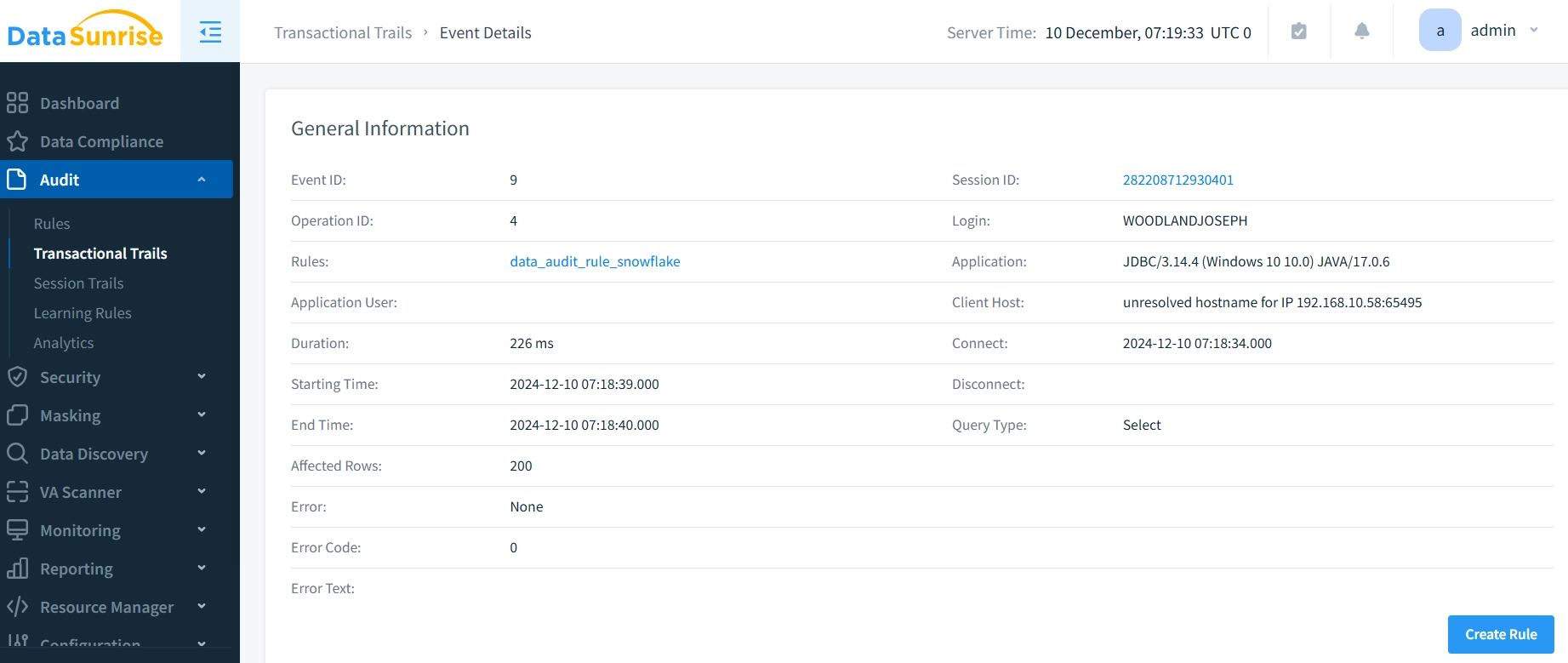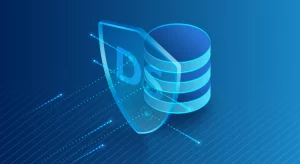Snowflake Audit Tools
In today’s data-driven landscape, implementing robust audit tools for Snowflake has become a strategic necessity. According to IDC’s 2024 Data Security Report, organizations with comprehensive audit solutions detect potential compliance violations 97% faster and reduce security-related incidents by up to 64%. With data breach costs exceeding $5.9 million in 2024 and compliance regulations constantly evolving, manual audit approaches are increasingly inadequate for modern enterprises.
Snowflake offers native auditing capabilities, but organizations operating in regulated industries often require more advanced tools to satisfy stringent compliance requirements and protect sensitive data effectively. A robust Snowflake audit framework provides critical visibility into user activities, query patterns, and data access, helping security teams identify suspicious behavior and demonstrate regulatory compliance.
In this article, we’ll explore native Snowflake audit tools and examine how third-party solutions like DataSunrise can enhance your audit capabilities with advanced monitoring, automated compliance reporting, and intelligent security controls.
Native Snowflake Audit Tools
Snowflake provides several built-in audit mechanisms that serve as the foundation for database activity monitoring, user access, and system changes. These native tools offer essential visibility into your Snowflake environment through SQL interfaces and the web console.
1. Account Usage Schema
Snowflake’s account usage views contain historical audit logs accessible through standard SQL queries:
-- Query login history for the past 7 days
SELECT
USER_NAME,
EVENT_TIMESTAMP,
CLIENT_IP,
REPORTED_CLIENT_TYPE,
IS_SUCCESS
FROM
SNOWFLAKE.ACCOUNT_USAGE.LOGIN_HISTORY
WHERE
EVENT_TIMESTAMP >= DATEADD(DAY, -7, CURRENT_TIMESTAMP())
ORDER BY
EVENT_TIMESTAMP DESC;
These views include:
- LOGIN_HISTORY: Records all authentication attempts
- QUERY_HISTORY: Captures details about executed queries
- ACCESS_HISTORY: Logs object access events
- COPY_HISTORY: Tracks data loading operations
2. Resource Monitoring
Track resource consumption with Snowflake’s monitoring tools:
-- Monitor warehouse usage
SELECT
WAREHOUSE_NAME,
START_TIME,
END_TIME,
CREDITS_USED,
BYTES_SCANNED
FROM
SNOWFLAKE.ACCOUNT_USAGE.WAREHOUSE_METERING_HISTORY
WHERE
START_TIME >= DATEADD(MONTH, -1, CURRENT_TIMESTAMP())
ORDER BY
START_TIME DESC;
3. Native Web Interface
Snowflake’s web console provides a user-friendly interface for accessing audit information without writing SQL:
- History Tab: View recent queries with filtering options
- Users & Roles: Monitor access control changes
- Usage: Track resource consumption and costs
- Worksheets: Review query execution history

While these native tools provide valuable insights, they have certain limitations for organizations with complex audit requirements:
| Native Feature | Key Limitation | Business Impact |
|---|---|---|
| Account Usage Schema | Limited retention periods (typically 1 year) | May not satisfy long-term compliance requirements |
| Query History | Basic monitoring without behavioral analysis | Difficulty identifying sophisticated attack patterns |
| Access Controls | Manual configuration and tracking | Administrative overhead increases with scale |
| Compliance Reporting | No automated regulatory mapping | Time-consuming audit preparation |
| Alert Mechanisms | Limited real-time notification capabilities | Delayed response to potential security incidents |
Enhanced Snowflake Audit Tools with DataSunrise
DataSunrise’s Database Security Suite significantly enhances Snowflake’s native audit capabilities by providing a comprehensive platform for monitoring, security, and compliance management. The solution delivers Zero-Touch Compliance Automation through advanced features designed specifically for cloud data platforms.
Key Capabilities
1. Auto-Discovery and Classification Engine
DataSunrise’s proprietary algorithms automatically scan your Snowflake environment to identify and classify sensitive data according to regulatory frameworks like GDPR compliance, HIPAA compliance, and PCI DSS compliance. This eliminates weeks of manual classification work and provides up to 95% greater coverage than traditional approaches.
2. Intelligent Policy Orchestration
Create sophisticated audit policies through an intuitive No-Code Policy Automation interface without writing complex SQL. This reduces implementation time from weeks to hours and ensures consistent enforcement across all Snowflake instances.
3. Comprehensive Audit Trail
DataSunrise captures detailed information about all data activity history, including:
- Query executions and results
- Data modifications (inserts, updates, deletes)
- Schema changes
- Authentication events
- Administrative actions
4. Behavioral Analytics
Unlike native tools that provide basic logging, DataSunrise implements sophisticated User Behavior Analysis to establish normal activity baselines and identify anomalous patterns that might indicate security threats. This transforms audit capabilities from reactive to predictive, enabling early detection of potential breaches.
5. Cross-Platform Universal Monitoring
DataSunrise ensures consistent audit coverage across heterogeneous environments where Snowflake coexists with other database systems. With support for over 40 data storage platforms, it eliminates audit blind spots and provides a unified security framework.
6. Compliance Autopilot
The Continuous Regulatory Calibration engine monitors changes in regulatory frameworks and automatically updates audit policies without manual intervention. This ensures ongoing compliance with GDPR, HIPAA, PCI DSS, SOX, and other regulations.
Implementing Advanced Audit Tools for Snowflake
Setting up DataSunrise’s audit tools for Snowflake follows a streamlined process:
1. Connect to Snowflake
Begin by establishing a secure connection between DataSunrise and your Snowflake environment.
2. Configure Audit Rules
Create customized audit rules to track specific activities, users, or data objects.
3. Implement Real-Time Monitoring
Enable continuous monitoring of database activities with intelligent alerting for suspicious events. Slack notifications ensure security teams can respond promptly to potential threats.
4. Configure Compliance Reporting
Set up automated compliance reports that map audit data to specific regulatory requirements.

The entire implementation typically requires less than a day, with most organizations achieving initial audit configuration in just hours—a dramatic improvement over traditional approaches that can take weeks or months.
Best Practices for Snowflake Audit Implementation
To maximize the effectiveness of your Snowflake audit tools, consider these best practices:
1. Strategic Monitoring Approach
Implement a tiered audit strategy based on data sensitivity and risk factors:
- Comprehensive Monitoring: Apply detailed auditing to sensitive data containing PII, PHI, or financial information
- Targeted Auditing: Focus on privileged user activities and administrative changes
- Periodic Sampling: Use statistical sampling for high-volume, low-risk operations to balance visibility with performance
2. Retention Management
Establish clear audit data retention policies that balance compliance requirements with resource optimization:
- Active Retention: Keep recent audit data (30-90 days) readily accessible for analysis
- Archival Strategy: Implement compressed storage for historical audit data (1-7 years)
- Legal Hold Provisions: Ensure ability to preserve audit data indefinitely when required for investigations
3. Alert Configuration
Design an intelligent alerting framework that prioritizes critical security events:
- Severity-Based Routing: Direct high-priority alerts to security teams in real-time
- Contextual Enrichment: Include relevant context with alerts to facilitate rapid response
- False Positive Reduction: Implement machine learning to minimize alert fatigue
4. Compliance Documentation
Maintain comprehensive documentation of your audit implementation:
- Architecture Diagrams: Document audit data flow and retention systems
- Policy Documentation: Maintain clear records of audit configurations and ruleset changes
- Validation Evidence: Preserve test results demonstrating audit coverage effectiveness
5. Implementing DataSunrise
Deploy DataSunrise as a comprehensive audit solution to enhance Snowflake’s native capabilities:
- Streamlined Setup: Utilize DataSunrise’s configuration wizard for rapid deployment
- Rule-Based Auditing: Implement predefined audit templates for common compliance frameworks
- Integration Options: Connect with existing security infrastructure such as SIEM systems
Conclusion
While Snowflake provides essential native audit capabilities, organizations with complex regulatory requirements benefit significantly from advanced audit tools like DataSunrise. By implementing Zero-Touch Compliance Automation with No-Code Policy Automation, organizations can transform their Snowflake audit process from a resource-intensive task to an efficient, adaptable framework that continuously evolves with changing requirements.
DataSunrise Overview offers cutting-edge database security tools specifically designed for cloud environments like Snowflake. With comprehensive audit capabilities, dynamic data masking, and intelligent security controls, DataSunrise provides the robust protection needed to secure your most sensitive data while simplifying compliance efforts.
Ready to enhance your Snowflake audit capabilities? Request an online demo today to experience how DataSunrise can transform your audit strategy while reducing administrative overhead.
